
Argentina is divided into twenty-three federated states called provinces and one called the autonomous city of Buenos Aires, which is the federal capital of the republic as decided by the Argentine Congress. The provinces and the capital have their own constitutions and exist under a federal system.

Victorino de la Plaza was an Argentine politician and lawyer who served as President of Argentina from 9 August 1914 to 11 October 1916.
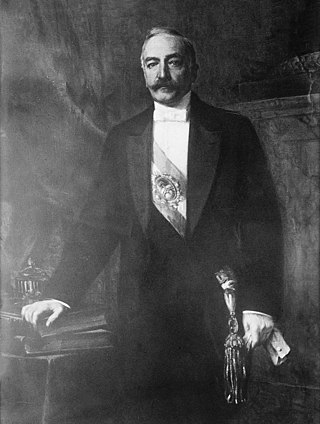
Roque José Antonio del Sagrado Corazón de Jesús Sáenz Peña Lahitte was an Argentine politician and lawyer who served as President of Argentina from 12 October 1910 to his death in office on 9 August 1914. He was the son of former president Luis Sáenz Peña. He was a candidate for an internal, modernist line within the National Autonomist Party.
Departments form the second level of administrative division, and are subdivided in municipalities. They are extended in all of Argentina except for the Province of Buenos Aires and the Autonomous City of Buenos Aires, the national capital, each of which has different administrative arrangements.
Argentina held national parliamentary elections on Sunday, 23 October 2005. For the purpose of these elections, each of the 23 provinces and the Autonomous City of Buenos Aires are considered electoral districts.

The current Constitution of Argentina dates from 1853. The Constitution of Argentina of 1853 was approved in 1853 by almost all of the provincial governments at that moment with the exception of Buenos Aires Province, which remained separate from the Argentine Confederation until 1859. After several modifications to the original constitution and the return of power to Buenos Aires' Unitarian Party, it was sanctioned on May 1, 1853, by the Constitutional Convention gathered in Santa Fe, and it was promulgated by the provisional director of the national executive government Justo José de Urquiza, a member of the Federalist Party. Following the short-lived constitutions of 1819 and 1826, it was the third constitution in the history of the country.

The San Nicolás Agreement was a pact signed on May 31, 1852 and subscribed by all but one of the 14 provinces of the United Provinces of the River Plate. The treaty consisted of 19 articles, and its goal was to set the bases for the national organization of the young Argentine state. It also served as precedent to the sanction of the Argentine Constitution of 1853.

The Argentine general election of 1931 was held on 8 November.

General elections were held in Argentina on 2 April 1916. Voters elected the President, legislators, and local officials. The first secret-ballot presidential elections in the nation's history, they were mandatory and had a turnout of 62.8%. The turnout for the Chamber of Deputies election was 65.9%.
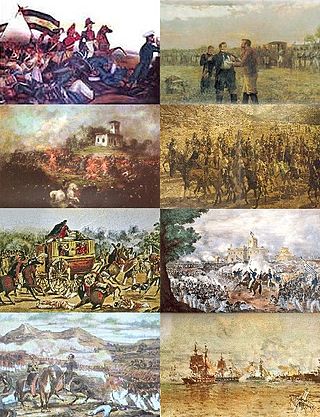
The Argentine Civil Wars were a series of civil conflicts of varying intensity that took place through the territories of Argentina from 1814 to 1853. Beginning concurrently with the Argentine War of Independence (1810–1818), the conflict prevented the formation of a stable governing body until the signing of the Argentine Constitution of 1853, followed by low-frequency skirmishes that ended with the Federalization of Buenos Aires. The period saw heavy intervention from the Brazilian Empire that fought against state and provinces in multiple wars. Breakaway nations, former territories of the viceroyalty, such as the Banda Oriental, Paraguay and the Upper Peru were involved to varying degrees. Foreign powers such as the British and French empires put heavy pressure on the fledgling nations at times of international war.

Argentine legislative elections of 1912 were held on 7 April 1912 for the Argentine Chamber of Deputies. The first free, democratic elections in the nation's history, the contest had a turnout of 73%.
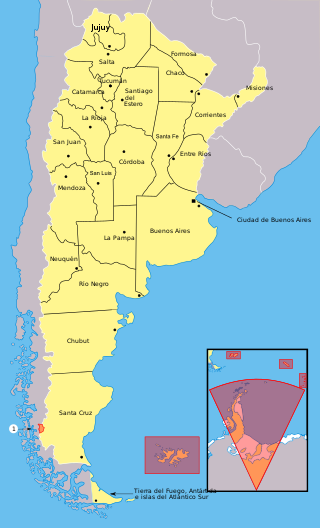
Most Provinces of Argentina held executive and legislative elections during 2011, electing governors and provincial legislatures. The only exceptions are Santiago del Estero Province, whose executive and legislative elections were elected in 2012; and Corrientes Province, whose gubernatorial election took place in 2013.
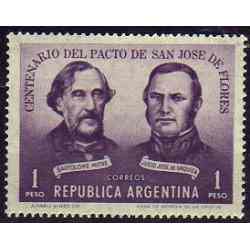
The Pact of San José de Flores was a treaty signed between the Argentine Confederation and the State of Buenos Aires on November 11, 1859, on the aftermath of the Battle of Cepeda. It established guidelines for the entry of the latter into the Confederation, and Buenos Aires' acceptance of the Argentine Constitution of 1853.

The Workers' Left Front – Unity is an alliance of initially three Trotskyist parties in Argentina formed to participate in elections in 2011, announced at a press conference in April that year. They were the Workers' Party (PO), the Socialist Workers' Party (PTS), and Socialist Left (IS). In 2019, the Workers' Socialist Movement (MST) joined the alliance.

Legislative elections were held in Argentina on 27 October 2013. Open primary elections (PASO) were previously held on 11 August 2013 to determine eligible party lists for the general election. As in 2011 – when such primaries were held for the first time – each party list had to reach a 1.5% threshold at the provincial level in order to proceed to the 27 October polls.
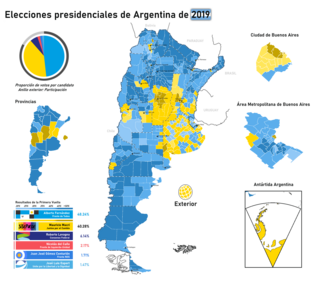
General elections were held in Argentina on 27 October 2019, to elect the president of Argentina, members of the national congress and the governors of most provinces.
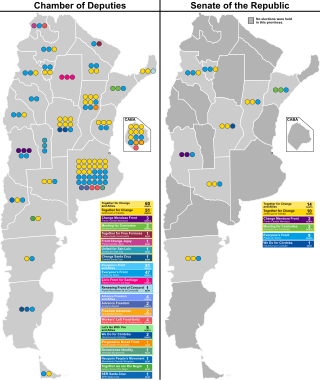
Legislative elections were held in Argentina on 14 November 2021. Half of the seats in the Chamber of Deputies and a third of the seats in the Senate were renewed. The election had previously been scheduled to take place on 24 October 2021, but was postponed due to the COVID-19 pandemic in Argentina.
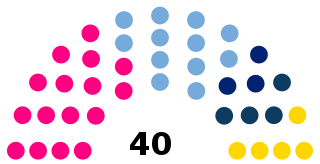
The Chamber of Deputies of Santiago del Estero Province is the unicameral legislative body of Santiago del Estero Province, in Argentina. It comprises 40 legislators, elected in a single province-wide multi-member district through proportional representation using the D'Hondt system.

The Argentine provincial elections will elect the executive and legislative authorities of the Autonomous City of Buenos Aires and in 21 of the 23 provinces of Argentina, except (executive) Corrientes and Santiago del Estero; elections in Tucumán and San Juan were suspended by the Supreme Court.

On 13 August 2023, the Simultaneous and Mandatory Open Primaries (PASO) were held in Argentina to determine candidatures for national offices in the presidential and legislative elections on 22 October 2023. It was the first election where Peronism lost and ended in third place.





















